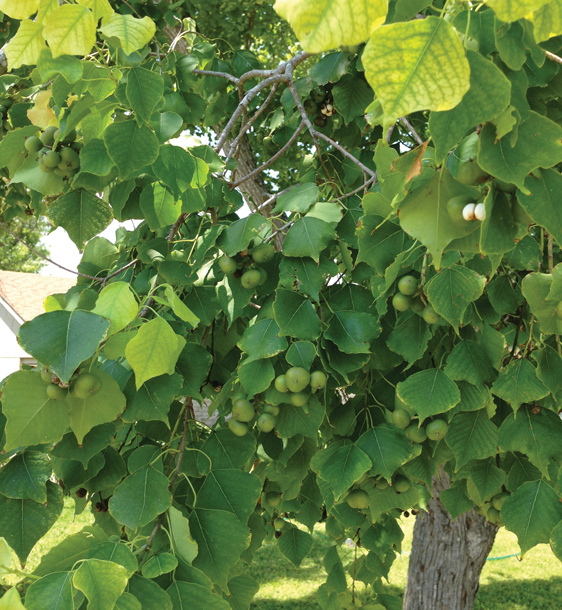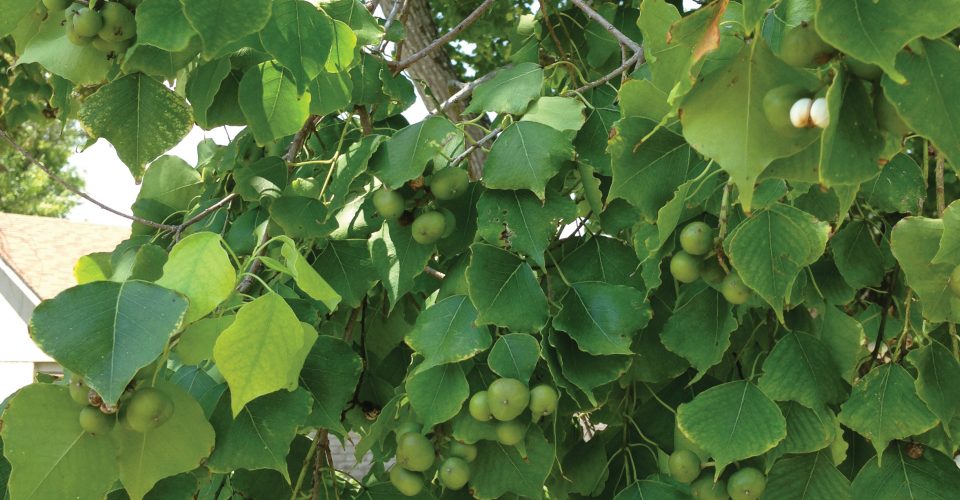Chinese Tallow (Sapium sebiferum)
Chinese tallow is an introduced, fast growing deciduous tree that is native to eastern Asia. It is found throughout the southeast Gulf Coast from South Carolina and Florida to Texas.
The tree was originally used in the U.S. as a landscape tree because it produces brightly colored fall foliage for urban landscapes.
- Also known as chicken tree, popcorn tree, Florida aspen and candleberry
- Its uses originally included soap production, candles and medicines
- Can quickly grow to a height of 30 feet and can spread rapidly from root sprouts and cuttings
- Has smooth, heart-shaped leaves and produces flowers that grow at the end of each branch
Chinese tallow is beneficial to beekeepers along the Gulf Coast because its flowers and nectar produce excellent honey. It has very little use for other species of wildlife or livestock, however.
The tree produces thousands of nut-like seeds from flowers that turn black in the fall. Many species of birds eat the seeds, which encourages the spread of the trees throughout the countryside.
Chinese tallow is frequently recognized as an invasive plant in pastures and rangelands. It can quickly out-compete native vegetation and dominate the landscape, creating a monoculture, as the decaying leaves have the ability to prevent other species of plants from germinating.
Chinese tallow cannot be purchased and sold in Texas. The Texas Department of Agriculture includes it on its list of noxious and invasive plants.
Chinese tallow can be controlled by a timely application of herbicide and/or prescribed fire.
Editor’s note: Kent Ferguson, retired rangeland management specialist from USDA Natural Resources Conservation Service (NRCS), is providing us with plant identification photo stories to help ranchers identify those forbs, forages and species growing in the pastures. Additional photos provided by USDA NRCS.
Chinese Tallow is excerpted from the February 2016 issue of The Cattleman magazine.


